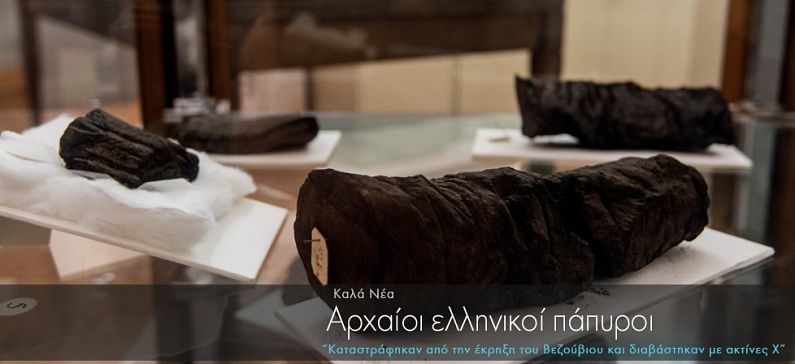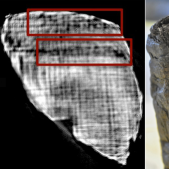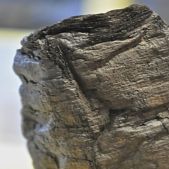
Ancient Greek papyrus scrolls damaged by Vesuvius eruption were deciphered with X-ray
Ancient classical texts written on papyrus scrolls blackened by the intense heat of being buried in volcanic ash have been read for the first time without them being unrolled and destroyed. The researchers have used a sophisticated X-ray machine called the European Synchotron in Grenoble to peer inside two rolled-up scrolls and see the individual letters of a segment of text written in ancient Greek.
Scientists at the National Research Council in Naples found they could read some of the scrolls without opening them by peering inside with x-rays.They used a powerful x-ray procedure to read out the first words from two of the Roman scrolls, which belong to the only library to have survived from the ancient world. The papyrus scrolls are among hundreds discovered in 1754 that made up an entire library in a small room of a huge villa in Herculaneum, a Roman city that was destroyed alongside Pompeii when the volcano erupted.
The villa and its lavish library of Epicurean philosophical texts is thought to have belonged to a wealthy Roman statesman, perhaps Calpurnius Piso Caesoninus, the father-in-law of Julius Caesar.
During the eruption in AD79, the Herculaneum scrolls were burned by a furnace-like blast of hot gas that reached 320C. The heat pulse carbonised the papyri leaving the scrolls charred and too fragile to unroll without destroying them. The papyri sheets could reach 15 metres long and were tightly rolled right-to-left, so they could be read left-to-right.
For centuries, their contents were a mystery because of the difficult of deciphering the words, written in ink made from blackened soot, from the surrounding papyrus, which was the same colour and texture having been incinerated by the volcanic fallout. An added difficulty was being able to see the words of the text within the inner layers of the rolled-up scroll. Unfurling them flat often destroyed them because they are so brittle, the scientists said.
“After several trials to select the most readable samples from the scanned images, there is no longer any doubt. The dark curves cannot be confused with the papyrus fibres,” said Daniel Delattre from the Institut de Recherche et d’Histoire des Textes in Paris.
“We were able to decipher letters from several layers from inside the rolled-up scroll without destroying it. Naples and the surrounding area was populated by people speaking Greek so it is not very surprising that we found many Greek scrolls” Dr Delattre said.









